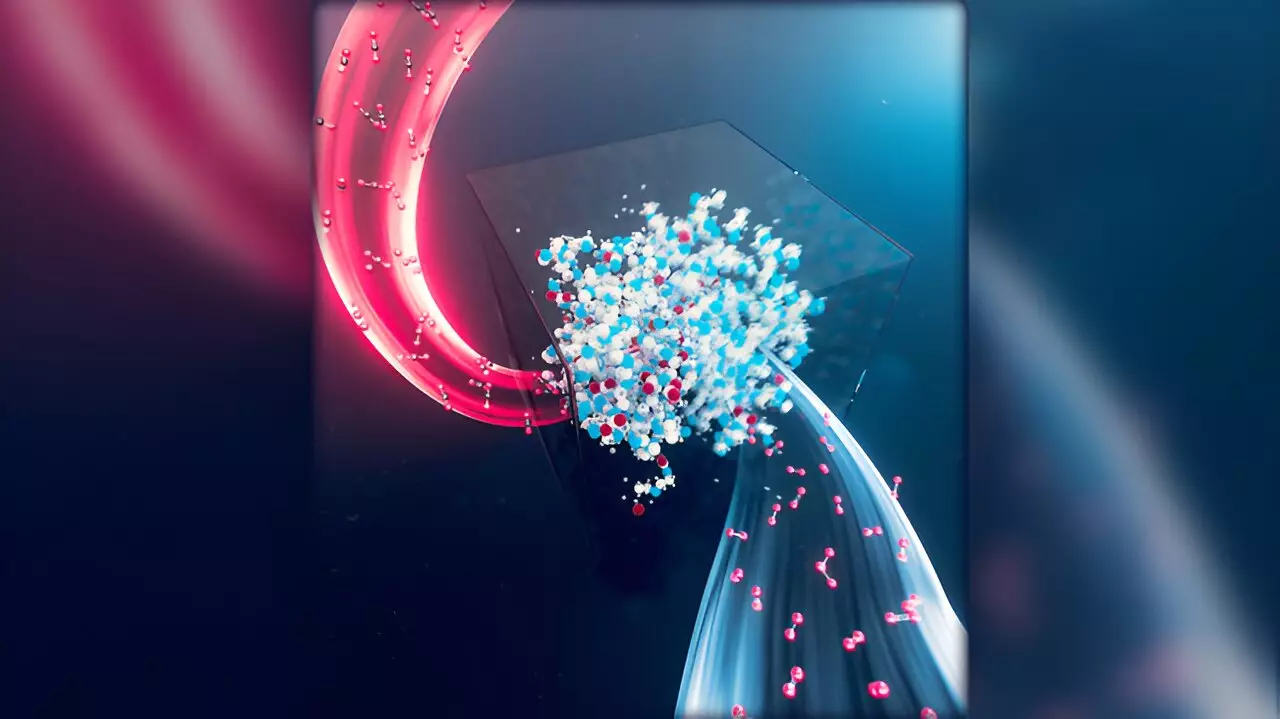Recent advancements from researchers at Lawrence Livermore National Laboratory (LLNL) in partnership with the Georgia Institute of Technology have illuminated the intricate relationship between carbon dioxide (CO2) and amine-functionalized porous solid materials. This research, published in the Journal of the American Chemical Society, highlights the complexities involved in direct air capture (DAC) technologies, which are crucial for addressing climate change. The study particularly focuses on poly(ethylenimine) sorbents, which are known for their ability to efficiently capture CO2, even at very low concentrations.
The principal investigator, Simon Pang, emphasized the importance of considering atmospheric components in designing more efficient DAC processes and materials. His assertion is supported by the research’s findings, which reveal how deepening our understanding of CO2’s effects can lead to the creation of sorbents with improved durability. Such advancements would not only increase the efficiency of carbon-capture solutions but also reduce costs, making DAC technologies more accessible.
While amine-based sorbents have proven effective in capturing CO2, their long-term stability remains a significant hurdle in their application. Oxidative degradation has been a prominent issue, threatening the reliability of these materials over time. The research team tackled the previously unclear role of CO2 in this degradation process, reconciling discrepancies found in earlier studies. Their findings revealed that CO2 impacts the oxidation kinetics of poly(ethylenimine) sorbents in a complex manner, influenced by temperature and the concentration of CO2.
Lead author Sichi Li pointed out the dual role of CO2 in oxidation reactions: while it can catalyze oxidation, it simultaneously reduces the mobility of polymer branches, slowing the propagation of free radicals. This nuanced understanding is vital, as it sheds light on the intricate degradation profiles and the specific conditions under which these materials operate.
The revelations from this study have broader implications beyond merely reconciling prior conflicting data. By identifying key factors that contribute to the accelerated oxidation of sorbents, investigators have opened the door to innovative strategies aimed at enhancing the longevity and performance of DAC materials. Potential solutions suggested include the incorporation of specific functional groups or additives designed to stabilize the polymer structure and reduce degradation rates.
Furthermore, the research points to the potential for employing oxide supports with tailored surface chemistry. These enhancements could neutralize acidic environments that promote oxidation, paving the way for sorbents that withstand harsh conditions while maintaining their efficiency in capturing carbon.
The collaborative research undertaken by LLNL and the Georgia Institute of Technology represents a meaningful leap forward in the quest for effective carbon capture technologies. By shedding light on the multifaceted interactions between CO2 and polymer sorbents, the findings not only deepen our scientific comprehension but also lay the groundwork for developing next-generation materials. This work demonstrates the critical importance of interdisciplinary collaboration in addressing climate-related challenges, ultimately contributing to a more sustainable and environmentally-conscious future.


Leave a Reply